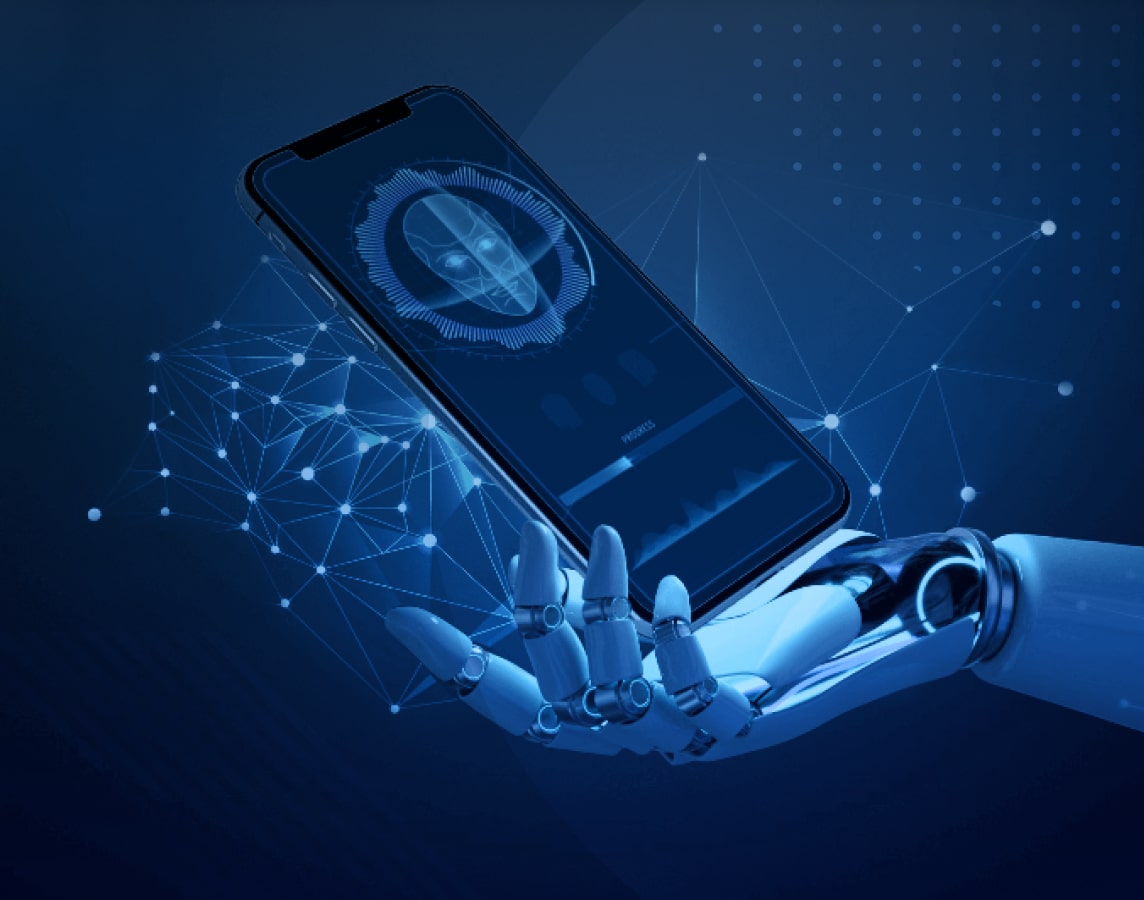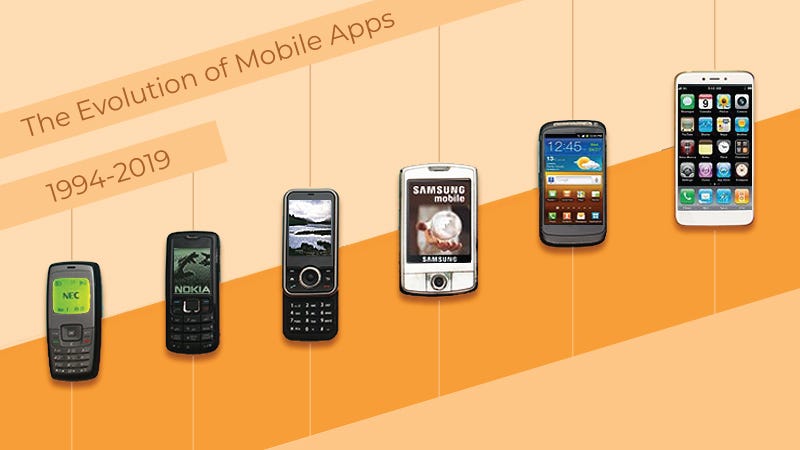Mobile applications have evolved from simple tools to sophisticated platforms. They now serve various functions, from communication to business.
Mobile applications began as basic programs designed for simple tasks like calculators and games. Over the years, they have transformed into complex ecosystems that support everything from social networking to e-commerce. The proliferation of smartphones and advancements in technology have driven this evolution.
Today’s apps integrate features like artificial intelligence, augmented reality, and real-time data analytics. Developers continually enhance user experience through innovative designs and functionalities. As a result, mobile applications have become indispensable in both personal and professional realms. This ongoing evolution promises even more exciting developments in the future.

Credit: www.testim.io
Early Beginnings
The journey of mobile applications began in the early 1990s. These apps were simple, yet revolutionary for their time. Early mobile apps transformed how people interacted with technology. They laid the groundwork for today’s advanced applications.
First Mobile Apps
The first mobile apps appeared on early mobile phones. These phones were not smartphones. They were basic devices with limited functions. The apps were often pre-installed by manufacturers. Popular examples included calculators, calendars, and simple games like Snake.
| Year | Mobile App | Function |
|---|---|---|
| 1994 | IBM Simon | Email, Calendar |
| 1997 | Snake | Game |
Simple Functions
Early mobile apps had simple functions. They aimed to make daily tasks easier. For example, the calculator helped with quick math. The calendar reminded users of important dates. These apps were basic but very useful.
- Calculator: Solve basic math problems
- Calendar: Keep track of dates and events
- Snake: Provide entertainment
These simple functions were groundbreaking. They showed the potential of mobile technology. Mobile apps have evolved a lot since then. Yet, these early apps were the foundation. They paved the way for the apps we use today.

Credit: www.linkedin.com
The Rise Of Smartphones
The rise of smartphones revolutionized mobile applications. These devices brought the internet to our pockets. Smartphones became an essential part of daily life.
Ios And Android
The launch of iOS and Android changed everything. Both operating systems offered unique features. They created a competitive environment for developers.
iOS is known for its security and user-friendly interface. Android offers customization and flexibility. Both platforms have millions of apps available.
App development for these platforms requires different skills. iOS uses Swift programming language. Android relies on Java and Kotlin.
App Stores
The introduction of app stores was a game-changer. Apple App Store launched in 2008. Google Play Store followed soon after.
These stores provided a marketplace for apps. Users could easily find and download apps. Developers gained a new way to distribute their products.
App stores offer various categories:
- Games
- Productivity
- Social Media
- Health and Fitness
Each category caters to different user needs. Apps in these categories improve daily tasks.
Both app stores have strict guidelines. These ensure quality and security for users. Developers must adhere to these guidelines to publish their apps.
Here’s a comparison of the two major app stores:
| Feature | Apple App Store | Google Play Store |
|---|---|---|
| Launch Year | 2008 | 2008 |
| Number of Apps | 1.96 million | 2.87 million |
| Revenue Model | Paid apps, in-app purchases, subscriptions | Paid apps, in-app purchases, subscriptions |
| Programming Languages | Swift, Objective-C | Java, Kotlin |
The competition between iOS and Android benefits users. It drives innovation and improves app quality.
App Development Boom
The app development boom changed the tech world. Mobile apps became essential tools. Everyone uses them daily. The rise began with smartphones. The demand for apps skyrocketed. Developers created apps for everything. This era saw innovation and growth.
Developer Ecosystems
Developer ecosystems grew rapidly. They provided tools and resources. Platforms like iOS and Android emerged. Developers accessed SDKs, APIs, and libraries. They created apps faster and easier. Communities formed around these platforms. Collaboration and learning flourished.
Here are some key aspects of developer ecosystems:
- SDKs: Software Development Kits
- APIs: Application Programming Interfaces
- Libraries: Pre-written code for common tasks
- Forums: Online communities for developers
- Documentation: Guides and manuals for developers
Popular Apps
Many popular apps emerged during the boom. These apps changed how we live. They made tasks easier and fun. Here are some notable examples:
| App Name | Category | Key Features |
|---|---|---|
| Messaging | Text, voice, and video chat | |
| Social Media | Photo and video sharing | |
| Uber | Transportation | Ride-hailing service |
| Spotify | Music Streaming | Millions of songs |
These apps set trends. They reached millions of users. They defined the app landscape.

Credit: www.zrix.com
User Experience Focus
The evolution of mobile applications has always centered on user experience. Developers and designers strive to create apps that are easy to use. The primary goal is to ensure that users can achieve their tasks efficiently and enjoyably.
Design Trends
Mobile app design trends have changed significantly over the years. Early designs were basic, with simple graphics and limited features. Modern apps focus on minimalist design and high-quality visuals. Clean interfaces and vibrant colors are now standard.
Another trend is the use of dark mode. This feature helps reduce eye strain and saves battery life. Many popular apps now offer dark mode as an option. Animated elements and transitions also add a dynamic feel to the user interface.
Intuitive Interfaces
An intuitive interface is key to a great user experience. Users should be able to navigate the app easily. Icons and buttons need to be clear and recognizable. Menus should be simple and organized.
Apps often include gesture controls like swiping and pinching. These gestures make the app feel more interactive. Voice commands are also becoming common, making apps accessible to more users.
| Feature | Description |
|---|---|
| Minimalist Design | Simple, clean interfaces with high-quality visuals. |
| Dark Mode | Reduces eye strain and saves battery life. |
| Gesture Controls | Swiping, pinching, and other gestures for interaction. |
| Voice Commands | Allows users to control the app with their voice. |
These trends and features ensure that modern mobile apps are user-friendly and efficient. They make it easy for users to accomplish their goals and enjoy their experience.
Security And Privacy
The evolution of mobile applications has brought many conveniences. But it also raised concerns about security and privacy. As apps become more advanced, protecting user data becomes crucial. This section explores the importance of data protection and user trust in mobile applications.
Data Protection
Data protection is vital in the digital age. Mobile apps store sensitive information, including personal details and financial data. Securing this information is essential to prevent unauthorized access and data breaches.
- Encryption: Encrypting data ensures that unauthorized users can’t read it.
- Authentication: Strong authentication methods like biometrics add extra security layers.
- Regular Updates: Frequent app updates fix vulnerabilities and protect user data.
Developers must implement these measures to safeguard data. Users also need to be aware of app permissions and only share necessary information.
User Trust
User trust is a cornerstone of successful mobile applications. If users feel their data is safe, they are more likely to use the app.
- Transparency: Apps should clearly state how they use and protect data.
- Privacy Policies: Detailed privacy policies help users understand data practices.
- User Control: Providing users control over their data builds trust and confidence.
Building user trust involves clear communication and ethical data practices. Users must feel that their privacy is respected and their data is secure.
Innovative Technologies
The evolution of mobile applications has seen groundbreaking advancements. Among these are Innovative Technologies that have transformed user experiences and functionalities. Let’s explore two key innovations: Augmented Reality and Artificial Intelligence.
Augmented Reality
Augmented Reality (AR) overlays digital information on the real world. This tech enhances how we interact with our surroundings. AR in mobile apps has various applications:
- Gaming: Games like Pokémon Go use AR to blend virtual and real worlds.
- Shopping: Apps allow users to visualize furniture in their homes.
- Education: AR apps provide interactive learning experiences.
AR technology enriches user engagement. It makes the digital experience more immersive.
Artificial Intelligence
Artificial Intelligence (AI) revolutionizes mobile applications. AI enables apps to learn from user behaviors. Here are key areas where AI makes a difference:
- Personalization: AI customizes app content based on user preferences.
- Voice Assistants: Siri, Alexa, and Google Assistant offer hands-free control.
- Chatbots: AI-powered chatbots provide instant customer support.
AI enhances user experience by making apps smarter and more intuitive.
Innovative technologies like AR and AI are shaping the future of mobile apps. They create more engaging and personalized experiences for users.
Cross-platform Development
Cross-Platform Development has revolutionized the world of mobile applications. Developers now create apps that work on multiple platforms. This method saves time and resources. Let’s explore this exciting evolution.
Hybrid Apps
Hybrid apps combine the best of both native and web apps. They are built using web technologies like HTML, CSS, and JavaScript. Developers wrap these apps in a native container. This container allows them to run on any device.
Hybrid apps offer many benefits. They provide a faster development cycle. Developers write one codebase for all platforms. This reduces the time needed to launch an app. Hybrid apps also offer easy updates. Developers can push changes without waiting for app store approvals.
There are some challenges with hybrid apps. Performance can sometimes lag behind native apps. This is because they rely on WebView for rendering. Despite this, hybrid apps are popular for many use cases.
Consistent Experiences
Consistent experiences are crucial in cross-platform development. Users expect the same look and feel across all devices. This consistency builds trust and improves user satisfaction.
To achieve this, developers use UI frameworks like React Native and Flutter. These tools help create a uniform interface. They ensure that apps look and behave the same on iOS and Android. These frameworks also provide pre-built components. This speeds up development and maintains consistency.
Another benefit is code reusability. Developers can share code between platforms. This reduces duplication and effort. It also helps in maintaining a consistent user experience.
In summary, cross-platform development offers many advantages. It brings efficiency, consistency, and ease of maintenance. These benefits make it a popular choice among developers today.
Future Trends
The evolution of mobile applications has been remarkable. Future trends will shape how we use these apps. Exciting developments are on the horizon. Let’s explore two critical areas: 5G Impact and IoT Integration.
5g Impact
5G technology will transform mobile apps. It offers faster speeds and lower latency. This will enhance user experiences significantly.
Here are some key impacts of 5G:
- Enhanced streaming: Ultra-high-definition video streaming without buffering.
- Real-time gaming: Multiplayer games with no lag.
- Improved AR/VR: Augmented and virtual reality apps will be smoother.
5G will also enable new types of apps. These include:
- Smart cities: Apps to manage city infrastructure in real-time.
- Healthcare: Remote surgeries and telemedicine will become common.
- Automated vehicles: Cars that communicate seamlessly with each other.
Iot Integration
IoT (Internet of Things) is connecting devices worldwide. Mobile apps will play a vital role in this ecosystem.
Key benefits of IoT integration include:
- Smart homes: Control lights, thermostats, and security systems from your phone.
- Wearables: Track health and fitness data in real-time.
- Industrial IoT: Manage machinery and production lines remotely.
IoT-enabled apps will also help in:
- Energy management: Optimize energy usage in buildings.
- Agriculture: Monitor soil health and crop conditions.
- Logistics: Track shipments and manage inventory.
Mobile applications will continue to evolve. The future holds endless possibilities. Stay tuned for these groundbreaking changes.
Conclusion
Mobile applications have transformed from simple tools to essential parts of our daily lives. They continue to evolve rapidly. The future promises even more innovation and integration. Staying updated with these changes is crucial. Embrace the advancements to make the most of what mobile technology offers.
Keep exploring and adapting.

